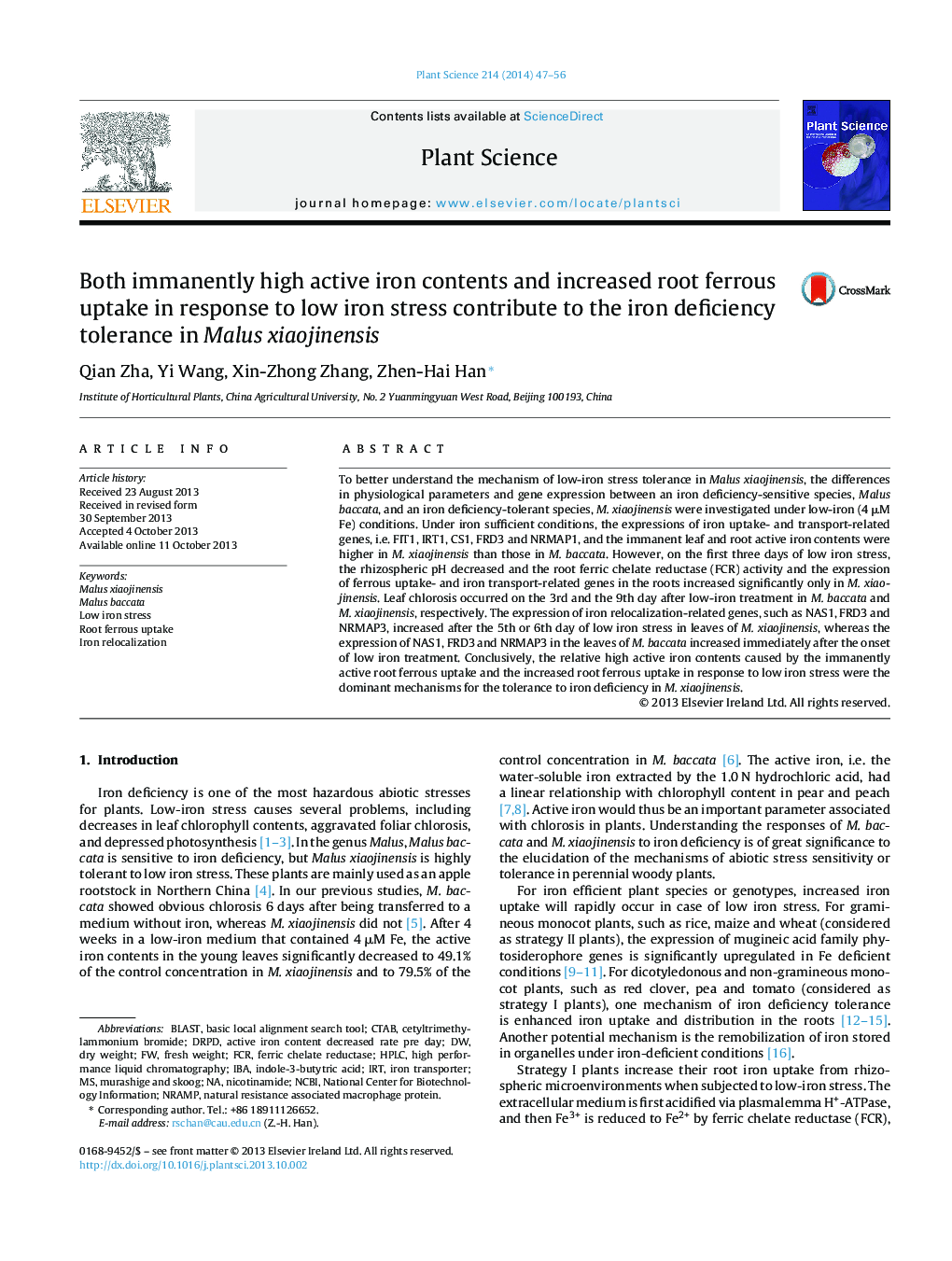| کد مقاله | کد نشریه | سال انتشار | مقاله انگلیسی | نسخه تمام متن |
|---|---|---|---|---|
| 2017120 | 1542071 | 2014 | 10 صفحه PDF | دانلود رایگان |

• The immanent active iron contents in M. xiaojinensis are higher than M. baccata.
• Root ferrous uptake was activated after iron starvation in M. xiaojinensis.
• In M. baccata iron relocalization started rapidly in response to low-iron stress.
• Iron relocalization started after 5 days of low-iron treatment in M. xiaojinensis.
To better understand the mechanism of low-iron stress tolerance in Malus xiaojinensis, the differences in physiological parameters and gene expression between an iron deficiency-sensitive species, Malus baccata, and an iron deficiency-tolerant species, M. xiaojinensis were investigated under low-iron (4 μM Fe) conditions. Under iron sufficient conditions, the expressions of iron uptake- and transport-related genes, i.e. FIT1, IRT1, CS1, FRD3 and NRMAP1, and the immanent leaf and root active iron contents were higher in M. xiaojinensis than those in M. baccata. However, on the first three days of low iron stress, the rhizospheric pH decreased and the root ferric chelate reductase (FCR) activity and the expression of ferrous uptake- and iron transport-related genes in the roots increased significantly only in M. xiaojinensis. Leaf chlorosis occurred on the 3rd and the 9th day after low-iron treatment in M. baccata and M. xiaojinensis, respectively. The expression of iron relocalization-related genes, such as NAS1, FRD3 and NRMAP3, increased after the 5th or 6th day of low iron stress in leaves of M. xiaojinensis, whereas the expression of NAS1, FRD3 and NRMAP3 in the leaves of M. baccata increased immediately after the onset of low iron treatment. Conclusively, the relative high active iron contents caused by the immanently active root ferrous uptake and the increased root ferrous uptake in response to low iron stress were the dominant mechanisms for the tolerance to iron deficiency in M. xiaojinensis.
Journal: Plant Science - Volume 214, January 2014, Pages 47–56